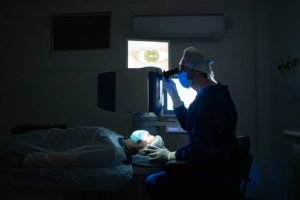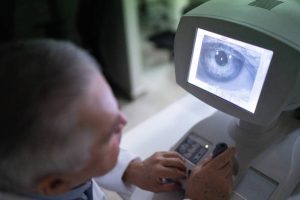The transformative procedure known as LASIK has emerged as a beacon in the quest for perfect vision, liberating countless individuals from the confines of corrective lenses. At its heart, LASIK is not merely a medical procedure, but a gateway to newfound visual freedom. As such, diving into the comprehensive understanding of its expenses, potential risks, and truthful outcomes becomes integral. This in-depth exploration aims to arm you with the vital knowledge needed when weighing the option of this sight-enhancing surgery.
What is LASIK Surgery?
Contents

Unveiling the mystery of LASIK surgery reveals an elegant solution to refractive errors. This sophisticated technique employs a laser to reshape the cornea, enhancing the eye’s ability to focus and bestow crisp vision to those who undergo it. A marvel of medical technology, LASIK has successfully garnered acclaim for its ability to significantly reduce, and in many cases eliminate, dependence on glasses or contact lenses.
LASIK operates at the forefront of precision. The procedure meticulously alters the eye’s surface by creating a small flap in the cornea to access and remodel the underlying tissue. The procedure is swift and efficient, with many marveling at the instant enhancements in their vision post-surgery. Origins of this medical miracle date back over two decades, witnessing a myriad of advancements that have continually refined the technique for safer and more effective outcomes.
Costs of LASIK Surgery

Pursuing LASIK surgery is an investment in one’s visual acuity, and understanding the financial aspect is paramount. The expense ranges widely, influenced by geolocation, the surgeon’s skills, and the technology employed. This financial commitment is indeed a considerable part of the decision-making process and should reflect not only the price but the value of the enhanced life quality post-surgery.
The spectrum of elements influencing the cost of LASIK is broad. Considerations such as the complexity of one’s vision correction needs, cutting-edge technologies employed, and the quality of the follow-up care all affect the final price tag. Expertise comes at a premium, with surgeons’ fees mirroring their experience and the standing of the LASIK center. When comparing costs, remember that the most economical option might not equate to the best one for your eyes.
Most patients find ways to mitigate the financial burden LASIK surgery presents. Insurance plans, while not always covering LASIK, might offer negotiated discounts; various LASIK centers help patients through structured payment plans, easing the financial load. Moreover, utilizing funds from Health Savings Accounts or Flexible Spending Accounts can also ameliorate the cost, making this life-changing surgery more reachable.
Risks and Complications of LASIK Surgery

LASIK surgery, though generally safe, carries the potential for risks and complications worth consideration. Recognizing these factors prior to the procedure is critical. Temporary discomforts such as dry eyes or visual disturbances are possible, yet mostly subside swiftly. More unusual are cases of infection or other severe outcomes, and their likelihood is reduced through meticulous surgical precision and thorough preoperative screenings.
Serious adverse effects stemming from LASIK surgery are not commonplace, with the scale tilting favorably toward successful outcomes. Still, conditions like undercorrection or overcorrection may occur, necessitating additional intervention. Today’s technology minimizes these risks, yet the patient’s due diligence in selecting a competent surgeon and following proper care instructions plays an inextricable role in mitigating such risks.
Considering the rarity of serious complications is affirming, but comprehending that individual factors influential to such risks is essential. Variables like corneal anatomy and ocular health contribute to the surgery’s success rate; a scientific evaluation by a seasoned LASIK specialist provides an accurate risk assessment, thus framing an informed pathway toward visual improvement.
Criteria for a Good LASIK Candidate

Eligibility for LASIK surgery isn’t universal; ideal candidates bear certain hallmarks such as prescription stability and satisfactory corneal volume. Mature enough to have a non-changing prescription, typically over the age of 18, along with healthy eyes devoid of severe issues, stand as likely qualifiers for this surgery.
The journey to LASIK begins with a comprehensive assessment, charting the corneal landscape and rendering a vision profile to configure the surgical plan. This forethought is the bedrock upon which a successful LASIK experience is built, ensuring suitability and laying the groundwork for a finely-tuned procedure expressly tailored to the individual.
Beyond understanding eligibility lies the importance of recognizing who might not be suited for the surgery. LASIK may not be viable for those with ultra-thin corneas or certain corneal irregularities, heavy dry eye syndrome, or other specific ophthalmic conditions. Alternative corrective methods may present better avenues in such instances, with counsel from a LASIK expert guiding the way.
What to Expect Before, During, and After LASIK Surgery

Preparation for LASIK surgery engenders both anticipation and a series of steps to be taken well before the procedure is underway. Meticulous pre-operative instructions ensure your corneas retain their natural shape and that nothing interferes with the surgery itself. Additionally, planning for recovery, such as securing transportation and eliminating any contaminants from around the eye, gets you ready for a swift return to daily routines.
The immediacy with which LASIK is performed often surprises patients. Within the span of twenty minutes or so, the procedure can correct vision in both eyes. Numbing drops safeguard against discomfort as the laser dances across the corneal surface, reshaping it based on the meticulous pre-surgery strategy. The quickness of the procedure does not impede the profound difference it makes; many leave the operating room already basking in the glow of enhanced sight.
Post-surgery care is a gentle yet precise roadmap to recovery. While most people resume their regular hustle within days, adherence to a prescribed regimen – avoiding physical exertion, abstaining from rubbing the eyes, and following scheduled check-ups – underpins a smooth transition to life post-LASIK. This careful approach is the sentinel of surgery success, ensuring your investment in visual acuity flourishes.
Choosing the Right LASIK Surgeon

The significance of choosing a surgeon for LASIK cannot be understated; this choice shapes the future of your vision. Seek out a surgeon with a robust resume in performing such surgeries, ideally backed by a board certification. Evaluating a surgeon’s experience and outcomes can imbue confidence in their capability to safeguard and enhance your sight.
Equip yourself with informed inquiries when meeting potential surgeons. Dig into their experience with LASIK, the tools they wield, and how they navigate unexpected complexities. Communication is the thread that ties trust to experience, leading to a successful surgical journey.
The caliber of the LASIK facility and the tools within are significant to the surgical results. Modern clinics furnished with the latest technology in refractive surgery may offer a higher precision, and thus a lower risk profile. A discerning eye over the surgical environment, alongside an appraisal of a surgeon’s prowess with such advancements, becomes essential in selecting where and from whom to receive treatment.
Navigating the realm of LASIK surgery includes charting the financial commitment, understanding the risks, and coming to terms with the surgery’s entire process. Discerning if you’re an apt candidate, realizing the operation sequence, and the assurance that you’ve chosen the right surgeon are essential steps. This repository of insights is a beacon on your voyage to visual independence, providing the context required to make a choice that’s aligned both with your vision goals and the personalized guidance from trusted healthcare professionals.

